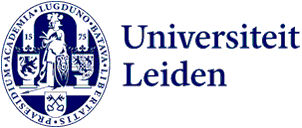Jasper's Day
Jasper Knoester is the dean of the Faculty of Science. How is he doing, what exactly does he do and what does his day look like? In each newsletter, Jasper gives an insight into his life.

Friday 10 March
'Friday would normally be a day in Groningen, but I have to be in Nijmegen this afternoon for the retirement of Lutgarde Buydens, Dean of the Science Faculty at Radboud University up until a year ago. I have a telephone consultation from home, say goodbye to Xuefei who is going to Thailand and China for two weeks and catch the train to Nijmegen. On the way there, I read the draft of a new publication.
Around noon, I settle behind my laptop in the Huygens building, the always lively home of Nijmegen's science faculty. I start with an online consultation with the group in Groningen. Three projects are in their final stages, and we talk intensively about what remains to be done. The largest project is about the spontaneous self-assembly of molecular nanotubes. We have unravelled this complex process with two other groups from Groningen. After more than two years of close collaboration, the manuscript is approaching its final form.
'I must confess I did not know Florence Nightingale was also a researcher'
When it’s half past two, I head to the University's auditorium, where Lutgarde Buydens' farewell speech will take place. I borrow a Nijmegen gown from the beadle, mingle with the waiting group of professors and at three o'clock the well-attended ceremony starts. A warm introduction by Rector Han van Krieken is followed by Lutgarde’s speech. In it, she has beautifully interwoven her own research and the policy issues she has championed as dean. I know her as a dean; we worked closely together for five years in the national consultation of science deans. I have never actually heard her talk about her research as an analytical chemist, which turns out to be very interesting. It strikes me that you get to know each other so well as administrators and at the same time know virtually nothing about each other's passion as researchers.
In her talk, she argues for more application-inspired basic research, the well-known Pasteur quadrant in the plane with dimensions "application" and "foundation". She connects this nicely with a call for greater recognition of the pioneering merits of women researchers of the past and suggests that this quadrant should henceforth be called the Nightingale quadrant, after British researcher-nurse Florence Nightingale.
To my shame, I must confess that I did not know that Nightingale, besides being a highly skilled and dedicated nurse, was also a researcher. She investigated the cause of death of soldiers in hospitals during the Crimean War and showed that poor hygiene and inadequate care were more important causes of death than primary injuries. For this, she developed, among other things, the polar diagram, a clear visualisation of statistical data. For the other quadrants, by the way, Lutgarde also has gender-diverse alternatives: the Bohr quadrant is renamed Marie Curie quadrant and the Edison quadrant is named after Shirley Jackson, researcher at Bell Laboratories in the second half of the last century.
After the reception in which I take full advantage of networking opportunities, I cycle to the railway station on my folding bike. Too bad the bus service is on strike, as the blizzard raging across the country makes cycling very unpleasant. If only I had a pair of ski goggles! Back in The Hague, the weather front appears to have moved on. Jasmijn has gone to Utrecht and Kamiel is glad he is no longer home alone. We watch a film and go to bed too late. The occasional men's night is so much fun!'
